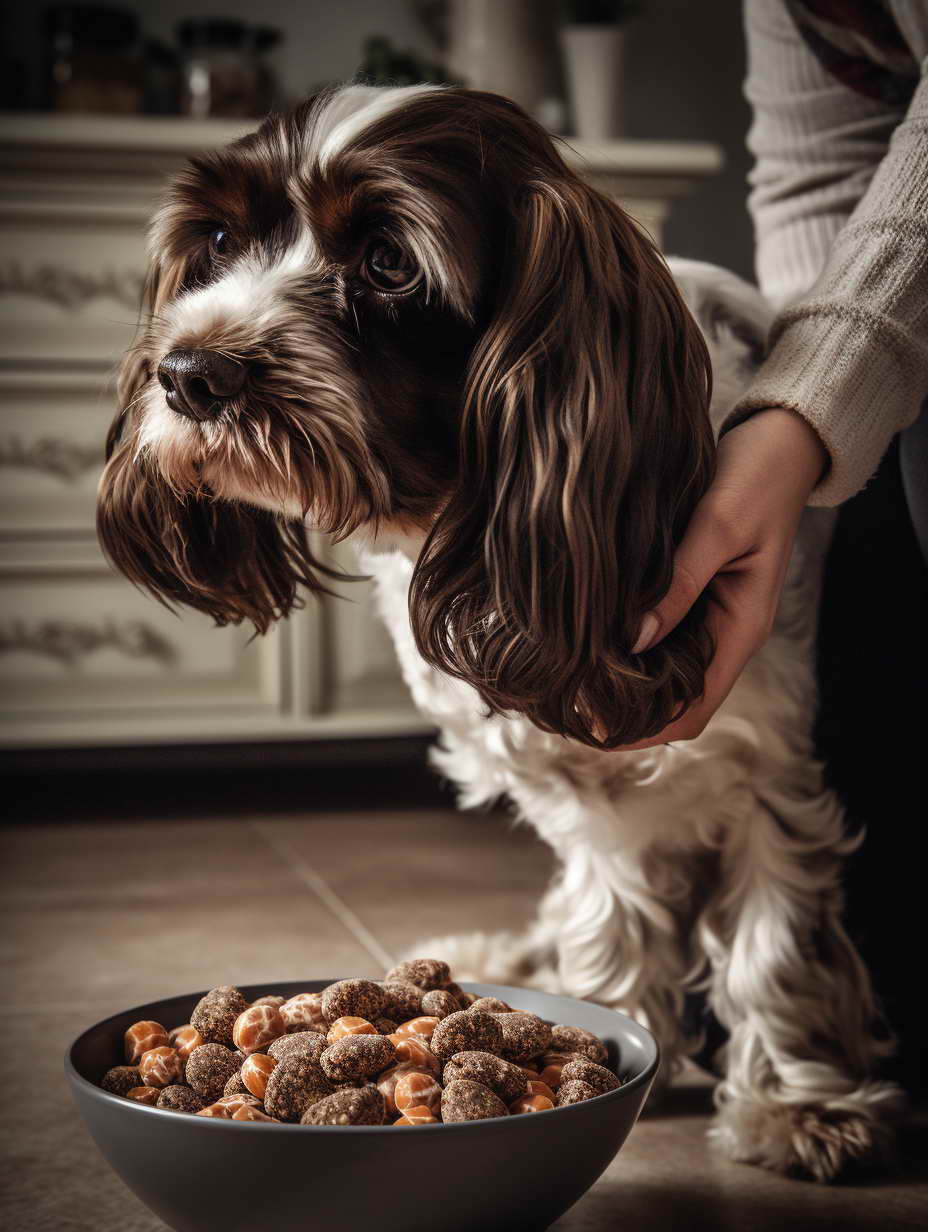Homemade Dried Dog Food Recipes: Tail-Wagging Goodness for Your Furry Friend
Introduction
Welcome to the world of Homemade Dried Dog Food Recipes, where you can provide your beloved pet with the healthiest and tastiest meals they deserve. In this comprehensive guide, we’ll walk you through the art of crafting these recipes, ensuring your furry friend receives the nourishment and love they need. Let’s embark on a culinary journey that both you and your dog will relish.
The Importance of Homemade Dried Dog Food Recipes
In the quest for better nutrition for our canine companions, Homemade Dried Dog Food Recipes have gained immense popularity. Here’s why:
Optimal Nutrition
Homemade recipes allow you to tailor your dog’s meals to their specific dietary needs. You can use high-quality ingredients, ensuring they get the best nutrition possible.
Allergen Control
Crafting your dog’s food at home lets you avoid common allergens. This is particularly useful if your dog has allergies or sensitivities.
Budget-Friendly
Contrary to popular belief, homemade dog food can be budget-friendly. You can buy ingredients in bulk and prepare larger batches.
Tailored Taste
You can cater to your dog’s preferences and create a meal they genuinely enjoy. Say goodbye to picky eaters!

The Basics of Homemade Dried Dog Food Recipes
When it comes to creating Homemade Dried Dog Food Recipes, understanding the fundamentals is key to ensuring your furry friend receives the best nutrition possible. Let’s delve deeper into the essential aspects of crafting these wholesome meals:
1. Ingredients Selection
The foundation of any great homemade dog food recipe is the choice of ingredients. Opt for high-quality, fresh ingredients that provide a balanced and nutritious meal for your canine companion. Here’s a breakdown of the main components:
- Proteins: Lean meats such as chicken, turkey, beef, or fish are excellent sources of protein. These help build and repair your dog’s muscles and tissues.
- Carbohydrates: Carbohydrates like brown rice, sweet potatoes, oats, and barley provide energy for your dog’s daily activities. They are also a good source of dietary fiber, aiding in digestion.
- Vegetables: Incorporating vegetables like carrots, peas, spinach, and broccoli adds essential vitamins and minerals to your dog’s diet. They also provide antioxidants that support overall health.
- Healthy Fats: Include sources of healthy fats, such as olive oil, flaxseed oil, or fish oil. These fats are crucial for maintaining a shiny coat and healthy skin.
- Supplements: Depending on your dog’s specific needs, you may need to add supplements such as calcium, vitamins, or minerals. Consult your veterinarian to determine the right supplements for your dog.
2. Cooking Methods
The method you choose to prepare homemade dried dog food can influence the taste, texture, and nutrient retention of the final product. Here are three common cooking methods:
a. Boiling
Boiling is a straightforward and effective method for cooking meats and vegetables. It’s a gentle cooking process that retains most of the nutrients in the ingredients. To prepare dog food using this method:
- Select Your Ingredients: Choose the meats, vegetables, and grains you want to include in your recipe.
- Cook Thoroughly: Boil the meats until they are fully cooked. For vegetables and grains, simmer them until they are tender but not overcooked.
- Drain and Cool: Drain excess water and allow the ingredients to cool before serving or further processing.
b. Baking
Baking is an excellent method for creating crunchy, dried treats that dogs love. To make baked dog food:
- Prepare the Ingredients: Mix your chosen ingredients, which can include meat, vegetables, and grains, in a bowl.
- Form Treats: Shape the mixture into small portions or treat-sized pieces.
- Baking: Preheat your oven and place the treats on a baking sheet. Bake at a moderate temperature until they become dry and crispy.
c. Dehydrating
Dehydrating dog food is an ideal method for preserving nutrients and extending shelf life. It removes moisture from the ingredients, making them less susceptible to spoilage. Here’s how to dehydrate dog food:
- Prepare the Ingredients: Similar to other methods, gather your chosen ingredients and prepare them as needed.
- Spread Out the Mixture: Lay the mixture on dehydrator trays in an even layer.
- Set the Temperature: Follow the dehydrator manufacturer’s instructions regarding temperature settings and drying time. Typically, low and slow heat is best for preserving nutrients.
By understanding these fundamental aspects of Homemade Dried Dog Food Recipes, you can create meals that cater to your dog’s unique nutritional needs while ensuring they enjoy every bite. Remember that consulting your veterinarian for guidance on your dog’s specific dietary requirements is always a wise choice.
FAQs
Are homemade dried dog food recipes suitable for all dogs?
Yes, but it’s crucial to consult your vet for advice on your dog’s specific nutritional needs.
How can I store homemade dried dog food?
Store it in an airtight container in a cool, dry place to maintain freshness.
Can I substitute ingredients in these recipes?
Absolutely! Tailor recipes to your dog’s preferences and dietary requirements.
Is it cost-effective to make homemade dog food?
Yes, buying ingredients in bulk can make homemade dog food budget-friendly.
Are there any potential allergens I should be cautious about?
Common allergens include grains, dairy, and certain proteins. Be mindful of your dog’s allergies.
How often should I feed my dog homemade dried food?
Consult your vet for a feeding schedule tailored to your dog’s age, size, and activity level.
Conclusion
Creating Homemade Dried Dog Food Recipes is a rewarding endeavor that ensures your furry friend enjoys nutritious and delicious meals. With these recipes and tips, you can provide your dog with the love and care they deserve. So, start cooking, and watch your dog’s tail wag with joy!

Leave a Reply